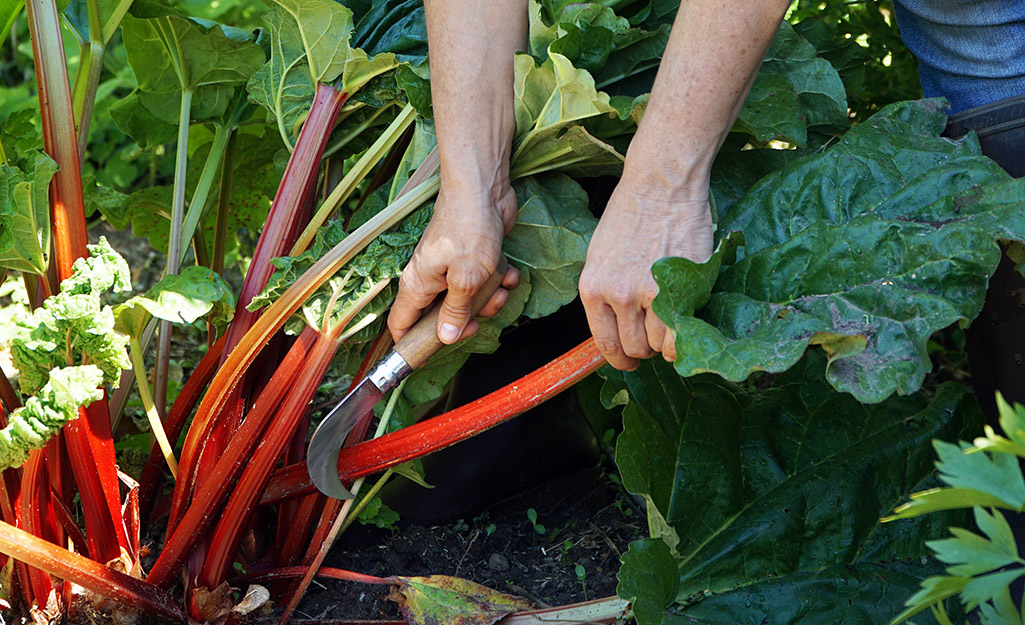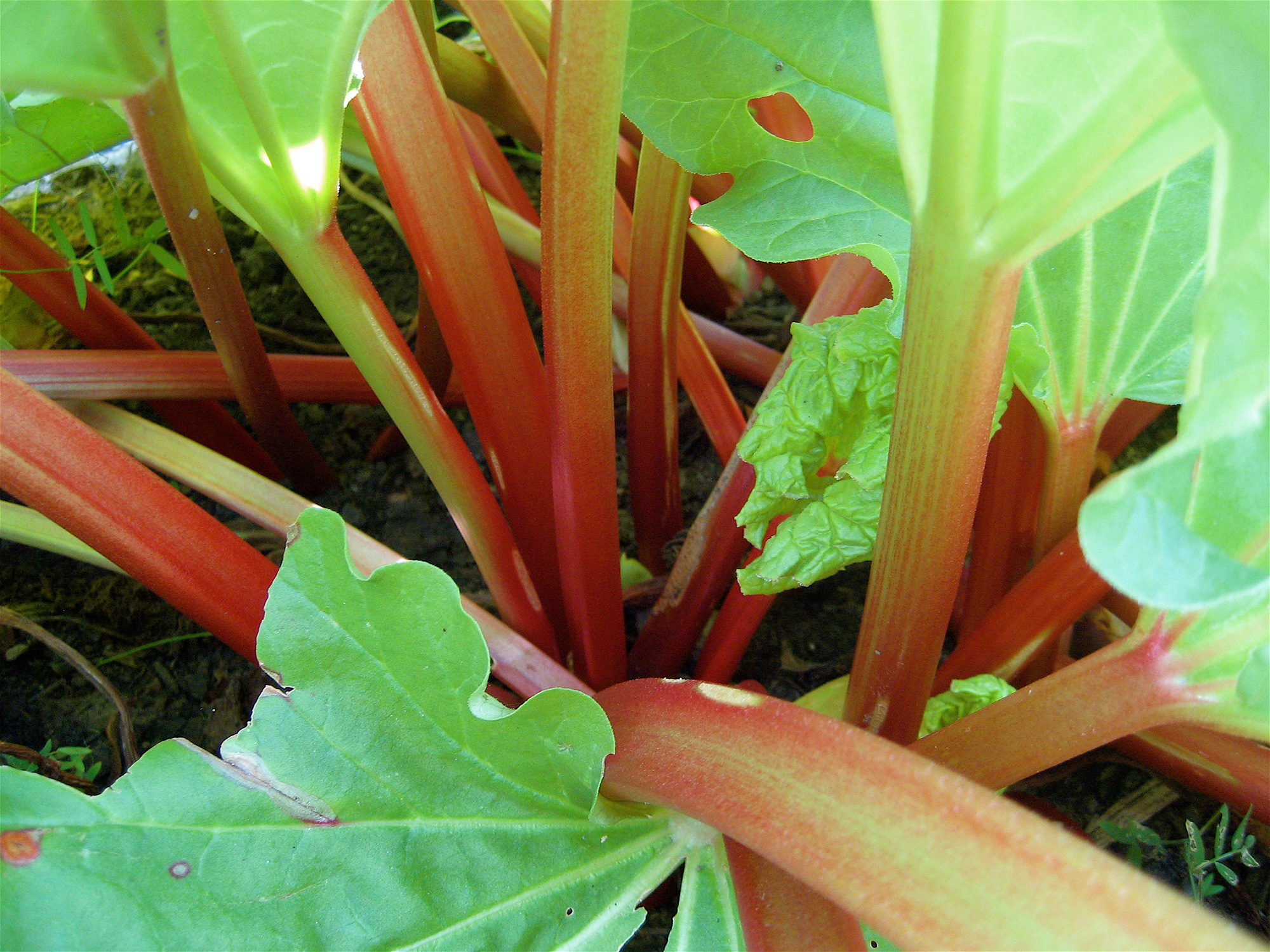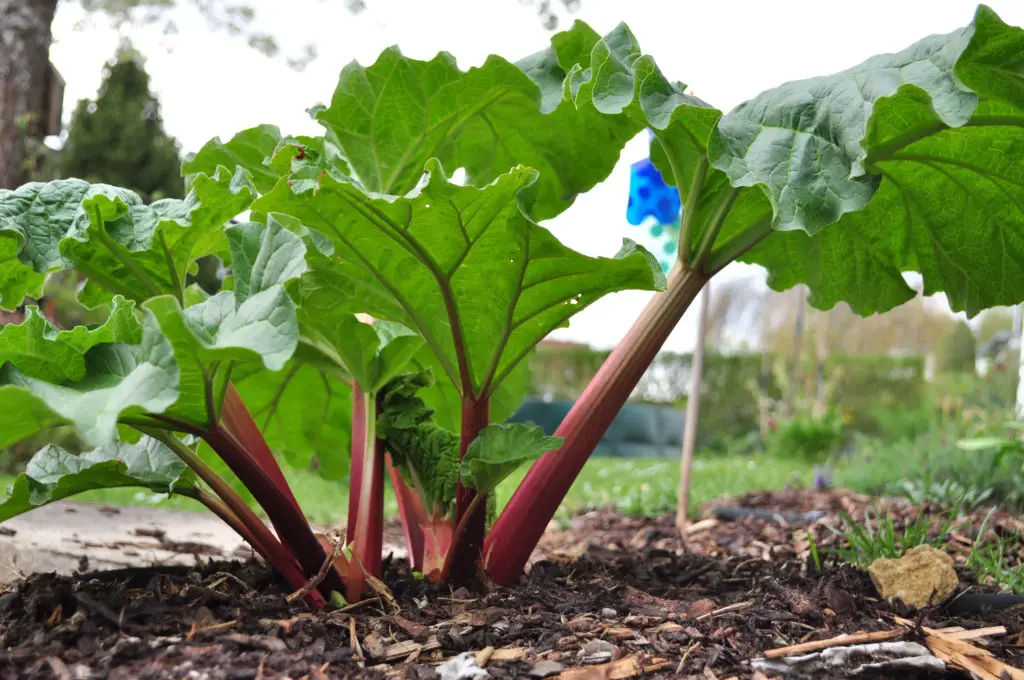Choosing the Right Rhubarb Variety for Your Garden
When it comes to growing rhubarb, selecting the right variety is crucial for a bountiful harvest. With over 100 varieties to choose from, it can be overwhelming to decide which one to plant in your garden. To make the process easier, let’s explore some popular varieties and their characteristics.
‘Victoria’ is a classic variety that has been a favorite among gardeners for centuries. It produces tender, sweet stalks with a vibrant red color. ‘Canada Red’ is another popular variety that boasts bright red stalks and a slightly sweeter flavor than ‘Victoria’. Both of these varieties are great for beginners and are relatively easy to grow.
Other varieties, such as ‘Valentine’ and ‘Crimson Cherry’, offer unique characteristics like deeper red colors and more compact growth habits. When choosing a variety, consider factors like flavor, texture, and growth habits to ensure you select the best one for your garden.
For example, if you’re looking for a variety that’s specifically bred for its sweet flavor, ‘Victoria’ might be the way to go. On the other hand, if you’re looking for a variety that’s more compact and produces deeper red stalks, ‘Crimson Cherry’ could be the better choice.
Ultimately, the key to growing a successful rhubarb plant is to choose a variety that’s well-suited to your climate and garden conditions. By selecting the right variety, you’ll be well on your way to enjoying a bountiful harvest of delicious rhubarb.
When learning how to grow a rhubarb plant, it’s essential to consider the specific needs of your chosen variety. By doing so, you’ll be able to provide the best possible conditions for your plant to thrive.
Preparing the Ideal Soil for Rhubarb Growth
Soil quality is a crucial factor in growing a healthy and productive rhubarb plant. Rhubarb prefers well-draining, fertile soil that is rich in organic matter. To create an optimal growing environment, it’s essential to test and amend the soil pH, nutrient levels, and drainage.
The ideal soil pH for rhubarb is between 6.0 and 6.5. If the soil pH is too high or too low, it can affect the plant’s ability to absorb essential nutrients. To test the soil pH, use a soil testing kit or send a sample to a laboratory for analysis. Based on the test results, add lime to raise the pH or sulfur to lower it.
In addition to pH, rhubarb requires a balanced diet of nutrients to thrive. The most critical nutrients for rhubarb are nitrogen, phosphorus, and potassium. A soil test can help determine the nutrient levels in the soil. Based on the test results, add organic or synthetic fertilizers to provide the necessary nutrients.
Good drainage is also essential for rhubarb growth. Rhubarb doesn’t like wet feet, so the soil should drain well to prevent waterlogged soil conditions. To improve drainage, add organic matter like compost or well-rotted manure to the soil. This will help to break up clay soils and improve the soil’s structure.
When learning how to grow a rhubarb plant, it’s essential to understand the importance of soil preparation. By creating an optimal growing environment, you’ll be able to provide your rhubarb plant with the best possible conditions for growth and productivity.
Some tips to keep in mind when preparing the soil for rhubarb include:
- Add a 2-inch layer of compost or well-rotted manure to the soil to improve its structure and fertility.
- Use a balanced fertilizer that contains equal amounts of nitrogen, phosphorus, and potassium.
- Avoid over-fertilizing, as this can damage the plant and the environment.
By following these tips and creating an optimal growing environment, you’ll be able to grow a healthy and productive rhubarb plant that will provide you with delicious stalks for years to come.
How to Plant Rhubarb Crowns for Maximum Success
Planting rhubarb crowns is a straightforward process that requires some basic knowledge and preparation. By following these steps, you can ensure that your rhubarb plant gets off to a healthy start and thrives in its new environment.
The best time to plant rhubarb crowns is in early spring or fall, when the weather is cooler and there is ample moisture in the soil. Avoid planting in the middle of the summer, as this can cause stress to the plant and lead to poor growth.
Before planting, make sure to handle the crowns carefully to avoid damaging the roots or the crown itself. If the crowns are bare-root, soak them in water for a few hours before planting to rehydrate the roots.
Plant the crowns 2-3 feet apart, depending on the variety, and 2-4 inches deep. The crown should be level with the soil surface, and the roots should be spread out evenly in the planting hole. Fill the hole with soil, and gently firm it around the roots to prevent air pockets from forming.
Water the soil well after planting, and keep it consistently moist during the first growing season. This will help the plant establish a strong root system and promote healthy growth.
Some tips to keep in mind when planting rhubarb crowns include:
- Plant the crowns in a location that receives full sun to partial shade, depending on the variety.
- Use a well-draining potting mix to prevent waterlogged soil conditions.
- Avoid planting rhubarb in areas with standing water or where water tends to collect.
By following these steps and tips, you can successfully plant your rhubarb crowns and enjoy a bountiful harvest of delicious rhubarb. Remember to also learn how to grow a rhubarb plant by providing the right conditions, including soil, water, and nutrients, to ensure optimal growth and productivity.
Watering and Mulching Strategies for Healthy Rhubarb
Rhubarb plants require consistent moisture, especially during the first growing season. However, overwatering can be detrimental to the plant’s health. To avoid this, it’s essential to understand the watering needs of rhubarb plants and implement effective mulching strategies.
Rhubarb plants prefer well-draining soil and should be watered deeply once or twice a week, depending on weather conditions. Avoid getting water on the leaves or crown, as this can lead to rot and other diseases. Instead, water at the base of the plant, allowing the soil to absorb the moisture.
Mulching is an excellent way to retain moisture in the soil, suppress weeds, and regulate soil temperature. Organic mulch materials like straw, bark chips, or grass clippings are ideal for rhubarb plants. Apply a 2-3 inch layer of mulch around the plant, keeping it a few inches away from the crown.
Some benefits of mulching rhubarb plants include:
- Improved soil moisture retention, reducing the need for frequent watering.
- Suppressed weed growth, reducing competition for nutrients and water.
- Regulated soil temperature, protecting the plant from extreme temperatures.
When learning how to grow a rhubarb plant, it’s essential to understand the importance of proper watering and mulching techniques. By providing the right conditions, you can promote healthy growth, prevent diseases, and enjoy a bountiful harvest of delicious rhubarb.
Additional tips for watering and mulching rhubarb plants include:
- Avoid watering during the hottest part of the day to prevent evaporation and reduce the risk of fungal diseases.
- Use a drip irrigation system or soaker hose to deliver water directly to the roots, reducing waste and preventing overwatering.
- Replenish mulch as needed to maintain a consistent layer and prevent weeds from growing.
Fertilizing Rhubarb Plants for Optimal Growth
Fertilizing rhubarb plants is essential for promoting healthy growth, maximizing yields, and maintaining soil fertility. Rhubarb plants require a balanced diet of nutrients, including nitrogen, phosphorus, and potassium, to thrive.
There are several types of fertilizers that can be used for rhubarb plants, including organic and synthetic options. Organic fertilizers, such as compost or well-rotted manure, are ideal for rhubarb plants as they release nutrients slowly and promote soil health. Synthetic fertilizers, such as ammonium nitrate or diammonium phosphate, can also be used, but they should be applied with caution to avoid overfertilizing.
The best time to fertilize rhubarb plants is in early spring, when the plants are actively growing. Apply a balanced fertilizer at a rate of 1-2 pounds per 100 square feet, following the manufacturer’s instructions. Avoid fertilizing during the summer months, as this can promote excessive growth and reduce yields.
Some tips to keep in mind when fertilizing rhubarb plants include:
- Avoid overfertilizing, as this can damage the plant and the environment.
- Use a soil test to determine the nutrient levels in the soil and adjust fertilizer applications accordingly.
- Consider using a fertilizer specifically formulated for rhubarb plants, as these products are designed to meet the unique nutritional needs of these plants.
When learning how to grow a rhubarb plant, it’s essential to understand the importance of fertilizing for optimal growth. By providing the right nutrients at the right time, you can promote healthy growth, maximize yields, and enjoy a bountiful harvest of delicious rhubarb.
Additional tips for fertilizing rhubarb plants include:
- Consider using a fertilizer with a slow-release formula to provide nutrients to the plant over an extended period.
- Avoid fertilizing during periods of drought or extreme weather, as this can stress the plant and reduce yields.
- Keep records of fertilizer applications to ensure that you are not overfertilizing and to adjust future applications accordingly.
Pest and Disease Management for Rhubarb Plants
Rhubarb plants are susceptible to various pests and diseases that can impact their growth and productivity. To maintain healthy plants and prevent infestations, it’s essential to implement effective pest and disease management strategies.
Common pests that affect rhubarb plants include slugs, snails, and aphids. These pests can cause damage to the leaves and stalks, reducing yields and affecting plant growth. To control these pests, use organic or chemical controls, such as copper tape, beer traps, or insecticidal soap.
Diseases that affect rhubarb plants include crown rot, leaf spot, and powdery mildew. These diseases can cause damage to the leaves and crown, reducing plant growth and productivity. To prevent these diseases, maintain good sanitation practices, remove infected plants, and use fungicides as needed.
Some tips to keep in mind when managing pests and diseases on rhubarb plants include:
- Monitor plants regularly for signs of pests or diseases, and take action promptly to prevent infestations.
- Use physical barriers, such as copper tape or fine mesh, to prevent slugs and snails from reaching the plants.
- Practice good sanitation, including removing weeds and debris, to reduce the risk of disease transmission.
When learning how to grow a rhubarb plant, it’s essential to understand the importance of pest and disease management. By implementing effective strategies, you can maintain healthy plants, prevent infestations, and enjoy a bountiful harvest of delicious rhubarb.
Additional tips for managing pests and diseases on rhubarb plants include:
- Use crop rotation to reduce the risk of disease transmission and break the life cycle of pests.
- Consider using biological controls, such as beneficial insects or microorganisms, to manage pests and diseases.
- Keep records of pest and disease management activities to track the effectiveness of different strategies and make informed decisions.
Pruning and Dividing Rhubarb Plants for Continued Health
Pruning and dividing rhubarb plants are essential practices for maintaining their health and promoting optimal growth. By pruning and dividing your rhubarb plants regularly, you can encourage new growth, increase yields, and prevent disease.
Pruning rhubarb plants involves removing dead or damaged stalks, as well as any weak or spindly growth. This helps to promote healthy growth and prevent the spread of disease. To prune your rhubarb plants, use a sharp knife or pruning shears to cut the stalks at the base of the plant. Remove any dead or damaged leaves, and trim back any weak or spindly growth.
Dividing rhubarb plants involves separating the crowns into smaller sections, each with its own roots and growth. This helps to promote new growth and increase yields. To divide your rhubarb plants, dig up the entire crown and separate it into smaller sections. Replant the sections in well-draining soil, and water them well.
Some tips to keep in mind when pruning and dividing rhubarb plants include:
- Prune your rhubarb plants in the spring or fall, when the plant is dormant.
- Divide your rhubarb plants every 3-4 years, to promote new growth and increase yields.
- Use a sharp knife or pruning shears to prune your rhubarb plants, to prevent spreading disease.
When learning how to grow a rhubarb plant, it’s essential to understand the importance of pruning and dividing. By pruning and dividing your rhubarb plants regularly, you can promote healthy growth, increase yields, and enjoy a bountiful harvest of delicious rhubarb.
Additional tips for pruning and dividing rhubarb plants include:
- Consider using a rhubarb fork to divide your rhubarb plants, as this can help to minimize damage to the roots.
- Replant the divided sections of your rhubarb plants in well-draining soil, to promote healthy growth.
- Water your rhubarb plants well after pruning or dividing, to help them establish themselves.
Harvesting Rhubarb: Tips for Maximum Flavor and Yield
Harvesting rhubarb is a crucial step in the growing process, as it determines the flavor, texture, and yield of the stalks. To ensure maximum flavor and yield, it’s essential to harvest rhubarb at the right time and use the correct techniques.
The best time to harvest rhubarb is in the spring, when the stalks are tender and flavorful. Avoid harvesting rhubarb in the summer, as the stalks can become tough and fibrous. To harvest rhubarb, grasp the stalk at the base and twist it gently to remove it from the plant. Cut the stalk at the base, leaving a small portion of the stem attached to the plant.
Some tips to keep in mind when harvesting rhubarb include:
- Harvest rhubarb in the morning, when the stalks are at their most tender.
- Avoid harvesting rhubarb in the rain, as this can cause the stalks to become waterlogged and lose their flavor.
- Use a sharp knife or pruning shears to cut the stalks, to prevent bruising and damage.
When learning how to grow a rhubarb plant, it’s essential to understand the importance of proper harvesting techniques. By harvesting rhubarb at the right time and using the correct techniques, you can enjoy a bountiful harvest of delicious and flavorful rhubarb.
Additional tips for harvesting rhubarb include:
- Consider using a rhubarb harvester, a specialized tool designed specifically for harvesting rhubarb.
- Store harvested rhubarb in a cool, dry place to maintain its flavor and texture.
- Use rhubarb immediately after harvesting, or store it in the refrigerator for up to a week.







